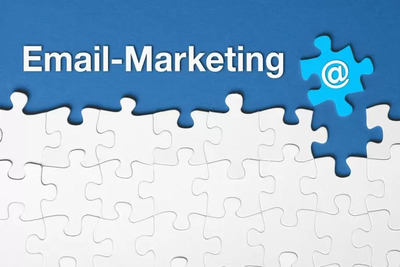In its 2015 State of Marketing survey of more than 5,000 global marketers, salesforce.com reports that email marketing is increasingly “an integral touchpoint along the customer journey for the majority of marketers,” with 80 percent of respondents indicating that email marketing is central to their business and the buyer's journey for 2015 as compared to 58 percent in 2014.  Other notable stats on the state of email marketing include the following:
Other notable stats on the state of email marketing include the following:
- The Radicati Group projects that by 2017, there will be 206 billion emails sent to 4.9 billion email accounts worldwide, every day.
- MarketingSherpa’s 2013 Email Marketing Benchmark Report shows 60 percent of marketers reported a positive return on investment from their email marketing efforts; overall, survey respondents estimated an impressive 119 percent ROI from email marketing campaigns.
- Citing research from eMarketer, McKinsey & Company writes at Forbes that 91 percent of all U.S. consumers report using email daily, and conversions from emails are not only three times higher than those from social media, but also claim a 17 percent higher average order value than social media.
Boasting such convincing numbers, email marketing should definitely be an integral part of your online marketing strategy – but it’s much more involved than just creating a message and pressing “send.” In this post, we’ll go over some basic metrics to become familiar with when you’re ready to start tracking your email marketing performance.
Essential email marketing performance metrics
There are five common email marketing metrics used in evaluating the effectiveness and efficiency of email marketing campaigns, and those are:
- Deliverability rate
- Open rate
- Click rate
- Conversion rate
- Unsubscribe rate
1. Deliverability rate means the number of emails sent out that successfully reach the intended recipients’ inboxes, as opposed to bouncing back due to incorrect or otherwise defunct email addresses. Technically, even emails that end up in recipients’ spam folders are considered “delivered,” although chances are they will not be seen, much less opened. According to Comm100 CEO Kevin Gao, if “email deliverability bounces exceed three percent, then you have entered a red flag zone,” meaning you should revisit your list to see if your source of leads is degrading.
2. Open rate is the number of emails that are opened compared to the total number of emails delivered. In the theoretical scenario of all emails sent being opened by all of the recipients on your list (and assuming a 100 percent deliverability rate), the open rate would be 100 percent. Of course, the real world doesn’t operate that way. If your email open rate is falling short of expectations, try creating more compelling subject lines and testing them. You may also want to experiment with decreasing the frequency of your emails. Based on our own research, we further recommend that you match the timing of your email campaigns to the speed of your sales cycles to optimize open rates. For example, if a given sales cycle is fast and consumers are able to make decisions quickly, a weekly or bi-weekly email campaign may be appropriate. On the other hand, if a sales cycle is relatively long then you’ll likely want to consider a monthly cadence.
3. Click rate refers to the percentage of links contained in a given set of email messages that are “clicked on” relative to their open rate. If your email campaign’s click rates aren’t performing, you may want to consider strengthening your offer and call to action to encourage email recipients to click through to your website’s intended destination pages.
4. Conversion rate is the measure of actions taken per email messages delivered. As conversions are the ultimate goal of email marketing campaigns, the conversion rate is the defining metric of your email marketing’s efficiency and effectiveness. A standard conversion rate ranges from 1 percent to 4 percent, and depends on the industry If your conversions are falling short of the mark, it may indicate that the email list is saturated with your offer. Consider changing up the offer or adding new leads to your list.
5. Unsubscribe rate represents the number of unsubscribe requests relative to the number of emails delivered. It is a telling metric that, if notably high, may mean you’re not providing value to recipients, or the frequency of emails sent may need to be cut back. Whatever the case may be, the unsubscribe rate is a critical measure informing businesses about the state of their email campaigns. Pay attention to this metric and adjust your message content and cadence, testing the results to fine-tune your email campaign.
It should come as no surprise that email is destined to keep growing as a primary digital marketing tool this year, as its track record continues to prove it a highly cost-effective channel for targeting both prospects and established customers with relevant messages. When you’re ready to get serious about your email marketing, make sure you put the research in to better understand the metrics discussed in this post as it relates to industry averages, and then over time, your campaign averages. Every business is different – so you can’t expect the same results as another – but the one thing that’s constant in any successful email marketing program is measurement, and applying what you’ve learned.


